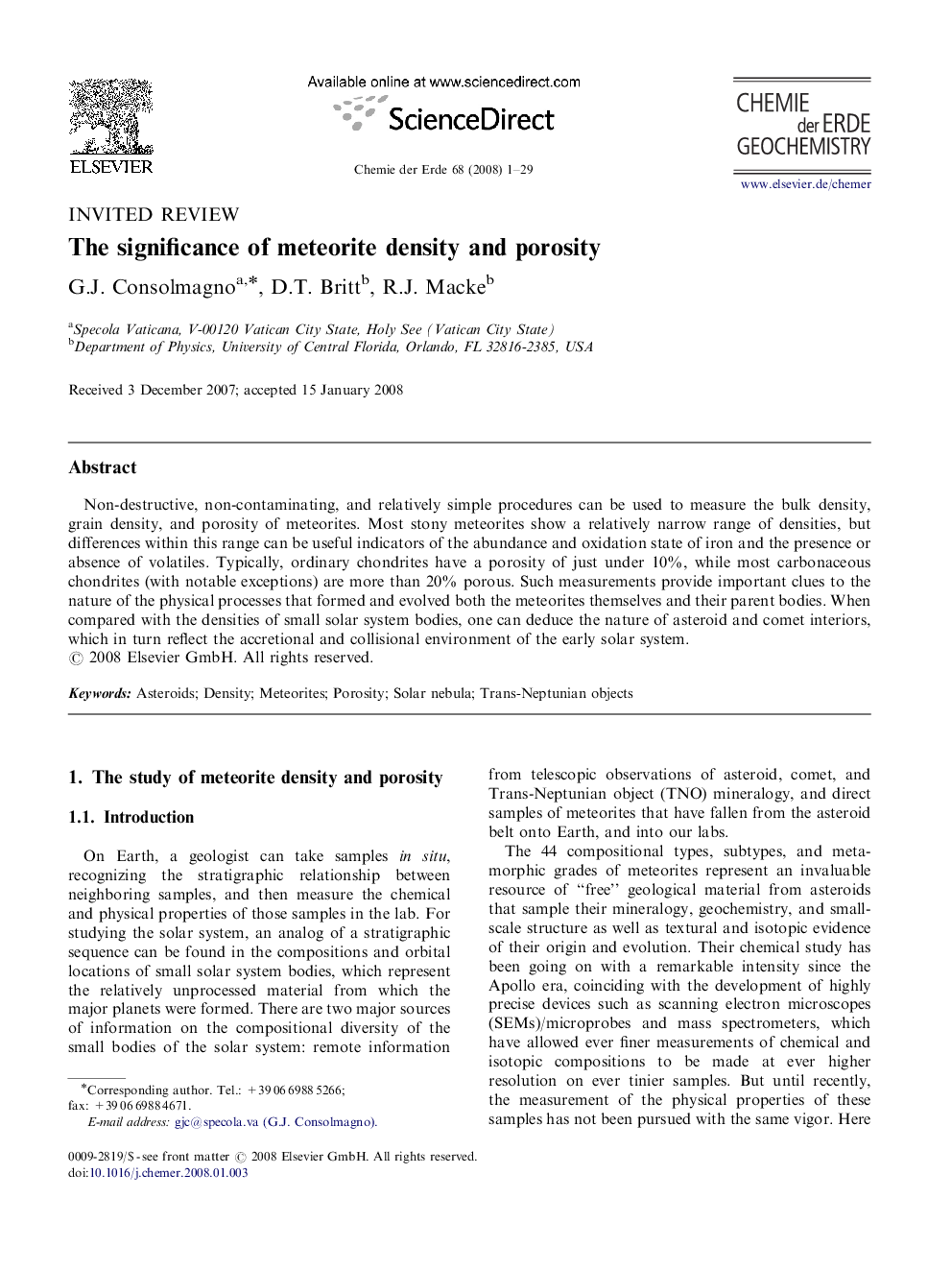| Article ID | Journal | Published Year | Pages | File Type |
|---|---|---|---|---|
| 4407229 | Chemie der Erde - Geochemistry | 2008 | 29 Pages |
Non-destructive, non-contaminating, and relatively simple procedures can be used to measure the bulk density, grain density, and porosity of meteorites. Most stony meteorites show a relatively narrow range of densities, but differences within this range can be useful indicators of the abundance and oxidation state of iron and the presence or absence of volatiles. Typically, ordinary chondrites have a porosity of just under 10%, while most carbonaceous chondrites (with notable exceptions) are more than 20% porous. Such measurements provide important clues to the nature of the physical processes that formed and evolved both the meteorites themselves and their parent bodies. When compared with the densities of small solar system bodies, one can deduce the nature of asteroid and comet interiors, which in turn reflect the accretional and collisional environment of the early solar system.
